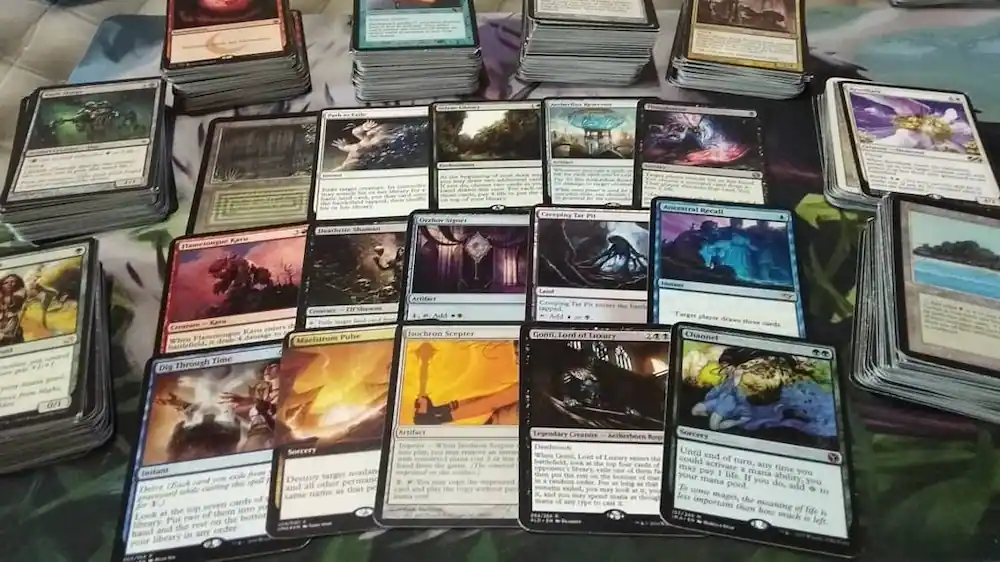By: Nathan Chen
Magic: The Gathering (MTG), a popular tabletop card game that combines strategy, skill, and collectibles, has captivated players for nearly three decades. However, in recent years, the market for rare game cards has skyrocketed, turning a beloved hobby into a thriving business for players and collectors alike.
With over 40 million players worldwide, Magic: The Gathering has amassed an expansive array of cards, each with different levels of rarity, desirability, and value. These range from common cards found in starter decks to incredibly rare and sought-after cards that fetch astronomical sums of money.
At the forefront of this booming industry is the world of professional MTG tournaments, where skilled players compete for substantial cash prizes. However, it’s not just the event winnings that are causing the buzz – it’s the potential value of the cards themselves.
A select few MTG cards, often referred to as “Power Nine,” are considered the holy grail for collectors and investors. These ultra-rare cards, printed in the game’s early years, possess unparalleled power and historical significance. Cards like the Black Lotus or the Mox Pearl can command six or even seven-figure prices in auctions, making them among the most expensive gaming collectibles in the world.
Beyond the iconic Power Nine, the rarity of certain cards and their overall playability also contribute to their market value. Cards with high demand and limited supply can experience significant price gains over time, sometimes doubling or even tripling in value within months. The ever-evolving game mechanics and the release of new expansions further fuel the demand for highly sought-after cards.
The growing interest in card investment has prompted the establishment of specialized marketplaces, such as Card Kingdom and StarCityGames. These platforms provide a space for buyers and sellers to trade or sell their rare cards, often at competitive prices. One can even find grading services that professionally assess the condition and authenticity of cards, adding an extra layer of security to buyers and helping to determine their market worth.
Another factor contributing to the business of Magic: The Gathering cards is the emergence of card flipping or investing as a viable financial avenue. Savvy investors are recognizing the potential for substantial returns as the value of certain cards appreciates over time. Similar to the stock market, buyers strategically purchase cards to sell them later when the market conditions are most favorable. However, investing in rare cards requires deep knowledge of the game, market trends, and the ability to predict the interests of collectors and players.
The COVID-19 pandemic has further propelled the Magic: The Gathering market. With a significant portion of the population staying indoors, enthusiasts, collectors, and investors alike have been seeking out new hobbies and alternative investment opportunities. As a result, the demand for rare cards has surged, driving up prices and cementing MTG’s position as a thriving, recession-resistant market.
While some critics argue that the obsession with rare game cards detracts from the essence of the game itself, a large portion of MTG players and collectors view rare cards as treasured artifacts, both financially rewarding and symbolically significant. Whether driven by passion, investment prospects, or a combination of both, it is clear that Magic: The Gathering has transformed from a mere game into a bustling business.
As long as the game continues to captivate players, and the market dynamics remain favorable, there will be money to be made in Magic. With the cachet of rare MTG cards growing each year, the booming business surrounding this beloved game seems set to continue its remarkable ascent for years to come.











